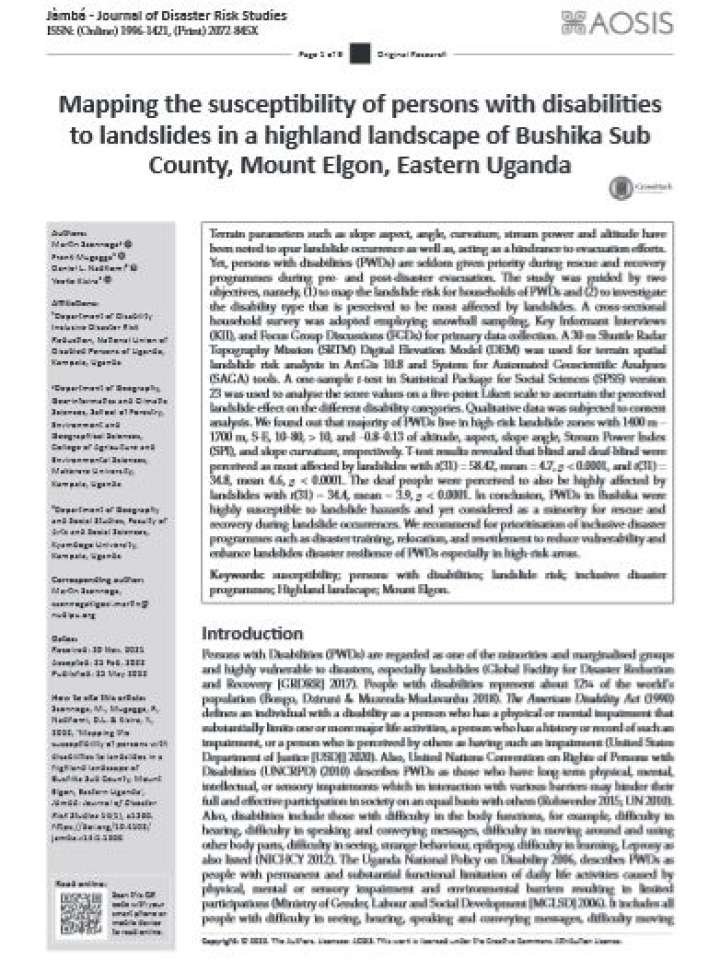Mapping the susceptibility of persons with disabilities to landslides in a highland landscape of Bushika Sub County, Mount Elgon, Eastern Uganda
This study was guided by two objectives, namely, (1) to map the landslide risk for households of persons with disabilities (PWDs) and (2) to investigate the disability type that is perceived to be most affected by landslides. A cross-sectional household survey was adopted employing snowball sampling, Key Informant Interviews (KII), and Focus Group Discussions (FGDs) for primary data collection. A 30-m Shuttle Radar Topography Mission (SRTM) Digital Elevation Model (DEM) was used for terrain spatial landslide risk analysis in ArcGis 10.8 and System for Automated Geoscientific Analyses (SAGA) tools.
The researchers found out that the majority of PWDs live in high-risk landslide zones with 1400 m – 1700 m, S-E, 10–80, > 10, and –0.8–0.13 of altitude, aspect, slope angle, Stream Power Index (SPI), and slope curvature, respectively. In conclusion, PWDs in Bushika were highly susceptible to landslide hazards and yet considered a minority for rescue and recovery during landslide occurrences. The authors recommend prioritisation of inclusive disaster programmes such as disaster training, relocation, and resettlement to reduce vulnerability and enhance landslides disaster resilience of PWDs especially in high-risk areas.
Explore further
